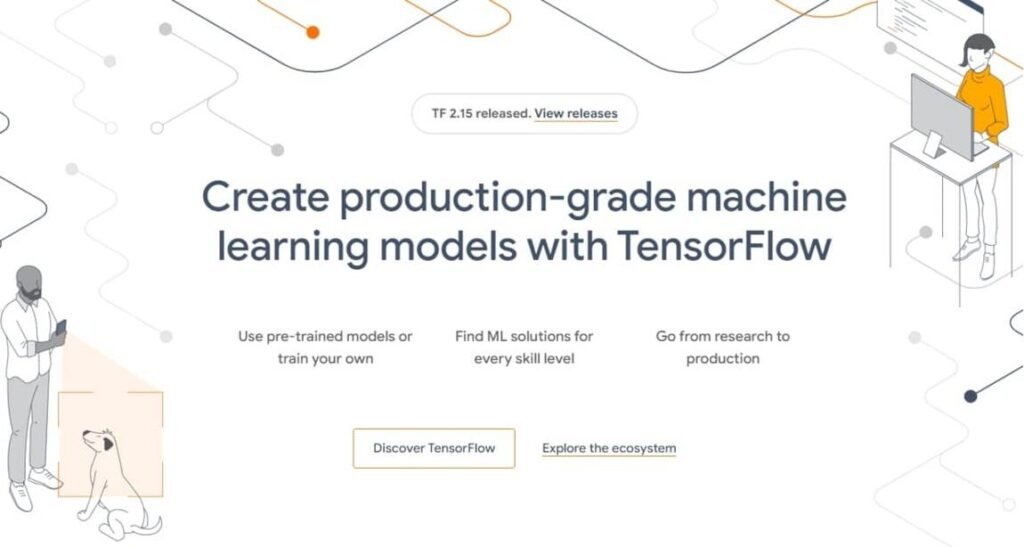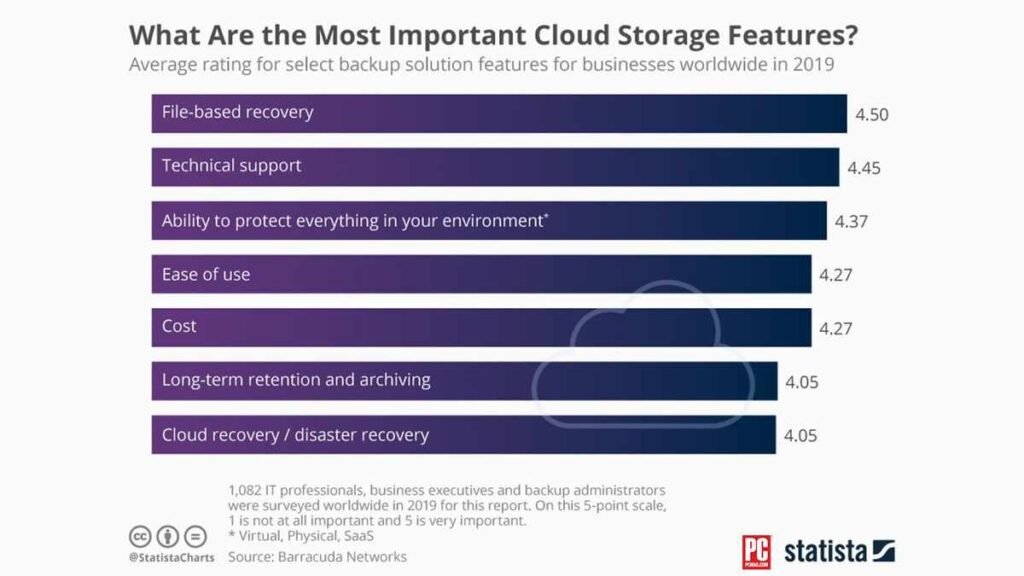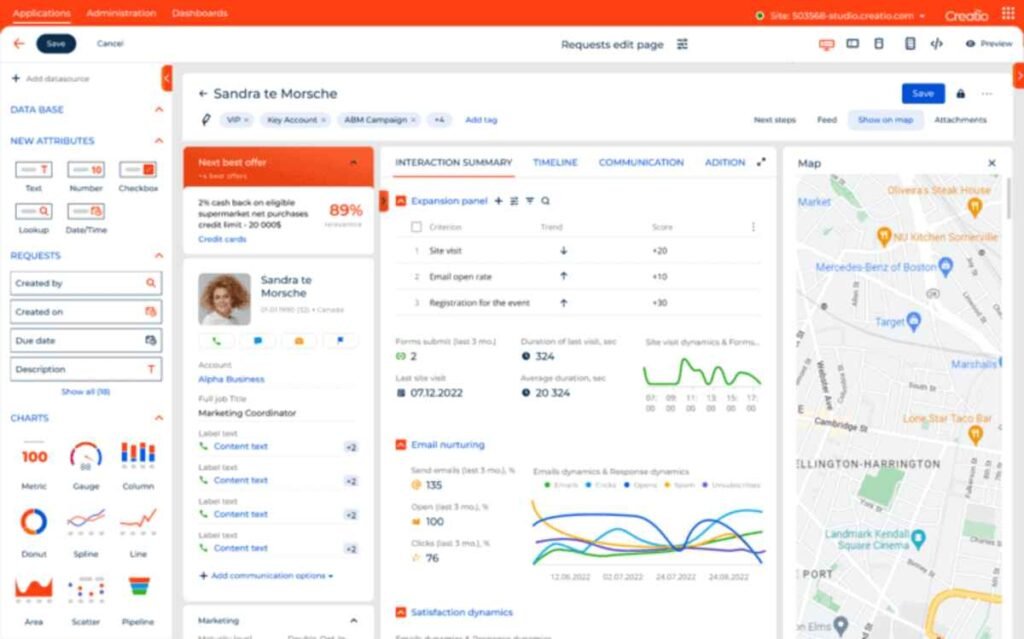Top Trending Application Software for 2024: Must-Have Tools
Top Trending Application Software

Top Trending Application Software: In the high speed universe of innovation, remaining on the ball is pivotal for organizations and people the same. The landscape of application software is constantly evolving. With new tools and platforms emerging to address the ever-changing needs of users. As we step into 2024. The demand for innovative and efficient software solutions continues to grow, shaping the way we work. Communicate, and solve problems.
This article delves into the top trending application software for 2024, highlighting the must-have tools that are making waves across various industries. From cutting-edge artificial intelligence and machine learning applications to robust cloud computing solutions, we’ll explore the software that’s revolutionizing productivity and efficiency. We’ll also examine the latest in cybersecurity, collaboration platforms, and the rise of low-code/no-code development tools, providing insights into the technologies that are set to define the future of software development and usage.
Artificial Intelligence and Machine Learning Tools

The AI and machine learning landscape has undergone a revolutionary transformation, driven by cutting-edge hardware and sophisticated algorithms. This evolution has paved the way for a variety of tools that address diverse needs across industries. According to a market analysis report by Grand View Research, the AI market was valued at $136.55 billion in 2022, highlighting the significant impact and growth of these technologies. “Top Trending Application Software”
AI/ML Tool Features
AI and ML tools offer a wide range of features designed to enhance efficiency and decision-making processes. These tools extend their capabilities across critical sectors such as healthcare, finance, and beyond. Some of the most prominent tools in the market include: “Top Trending Application Software”
- TensorFlow: Developed by Google, this free and open-source software library is known for its flexibility and scalability. It supports a range of applications, from linear models to complex deep-learning neural networks.
- PyTorch: Based on the Torch library, PyTorch has gained popularity among researchers and academics for applications such as computer vision and natural language processing.
- Scikit-Learn: This free machine-learning library interacts seamlessly with Python numerical and scientific libraries like NumPy and SciPy.
- XGBoost: An open-source software library providing a gradient-boosting framework for various programming languages, including C++, Python, and Java.
- OpenCV: A cross-platform and open-source computer vision library that supports a vast range of images and video processing tasks.
- Hugging Face Transformers: This library simplifies the use of pre-trained NLP models, empowering developers to utilize NLP capabilities in their applications.
AI/ML Tool Pricing
While many AI and ML tools offer free and open-source options, pricing structures vary depending on the tool and its features. For instance, TensorFlow and PyTorch are free to use, making them accessible to a wide range of developers and researchers. However, enterprise-level solutions like AWS SageMaker and Azure ML may have tiered pricing based on usage and additional features. “Top Trending Application Software”
AI/ML Tool Use Cases
AI and ML tools find applications across various industries and scenarios:
- Data Analysis and Interpretation: These tools are critical for analyzing and interpreting vast amounts of data quickly and efficiently, uncovering patterns and insights that would be impossible for humans to find.
- Robotization: ML empowers the computerization of dynamic cycles and can perform errands without human mediation, expanding proficiency and efficiency in different enterprises.
- Personalization: ML tools are at the heart of personalization technologies used in e-commerce, content platforms, and marketing, providing tailored experiences to users based on their behaviors and preferences.
- Innovation and Competitive Advantage: Businesses leveraging ML tools can innovate faster, creating new products and services that more effectively meet customer needs.
- Solving Complex Problems: ML tools have the potential to solve complex problems in diverse domains, including healthcare, finance, and environmental protection, by finding solutions that are not apparent through traditional methods.
As AI and ML continue to evolve, these tools are becoming increasingly accessible and powerful, enabling organizations to harness the full potential of data-driven decision-making and innovation. “Top Trending Application Software”
Cloud Computing and Storage Solutions

Cloud computing and storage solutions have become essential tools for modern businesses, enabling them to manage data efficiently, scale operations, and enhance productivity. These services provide on-demand access to a wide range of IT resources and services over the internet, including storage, computing power, and application development platforms.
Cloud Tool Features
Cloud computing tools offer a variety of features designed to meet diverse business needs: “Top Trending Application Software”
- Scalability: Organizations can quickly scale their resources up or down based on demand, without the need for significant upfront investments in hardware or infrastructure.
- Accessibility: Cloud storage enables users to access, edit, and share data from any device with an internet connection, facilitating remote work and collaboration.
- Data Security: Most cloud providers implement robust security measures, including encryption and access controls, to protect stored data from unauthorized access and breaches.
- Backup and Disaster Recovery: Automated backup and recovery options come standard with most cloud solutions, ensuring data safety in case of hardware failures or other emergencies.
- Cost-efficiency: Cloud services typically operate on a pay-as-you-go model, allowing businesses to optimize their IT spending.
Cloud Tool Pricing
Cloud storage pricing is determined by several factors: “Top Trending Application Software”
- Data Storage Capacity: The amount of storage required directly affects the cost, with higher capacities generally incurring higher fees.
- Data Durability and Availability: Providers offer varying levels of data durability, which affects long-term data integrity and accessibility.
- Subscription Plan Types: Different plans cater to various needs, helping businesses avoid unnecessary costs associated with unused capacity.
- Number of Users/Devices: Many vendors charge on a per-user, per-month basis, with costs increasing as more users or devices are added.
- Security Features: Advanced security capabilities, such as zero-knowledge encryption or end-to-end protection, may impact pricing.
Cloud Tool Integrations
The ability of cloud tools to integrate with other applications and systems is crucial for maximizing their value:
- API Integration: Many cloud services offer APIs that allow seamless integration with other software, enhancing workflow efficiency.
- Collaboration Tools: Cloud storage services often integrate with productivity suites, enabling real-time collaboration on documents and projects.
- Data Analytics: Integration with analytics tools allows businesses to extract valuable insights from their stored data.
- DevOps Tools: Cloud platforms frequently integrate with development and operations tools, streamlining the software development life cycle.
- CRM Systems: Integration with Customer Relationship Management systems enhances data accessibility and customer service capabilities.
By leveraging these features, pricing models, and integration capabilities, businesses can harness the full potential of cloud computing and storage solutions to drive innovation, improve efficiency, and maintain a competitive edge in the digital landscape. “Top Trending Application Software”
Cybersecurity and Data Protection Software

In an era of increasing digital threats, cybersecurity and data protection software have become essential tools for organizations to safeguard their sensitive information and digital assets. These specialized tools are designed to protect against unauthorized access, data breaches, and various forms of cyber attacks. “Top Trending Application Software”
Cybersecurity Tool Features
Modern cybersecurity tools offer a wide range of features to address the complex landscape of digital threats: “Top Trending Application Software”
- Network Security: Firewalls, Intrusion Detection Systems (IDS), and Intrusion Prevention Systems (IPS) monitor and filter network traffic, blocking potential threats in real-time.
- Encryption: Tools like SSL/TLS protocols and file encryption software ensure data remains unreadable to unauthorized users, even if compromised.
- Endpoint Protection: Antivirus software and Endpoint Detection and Response (EDR) tools safeguard individual devices from malware and other malicious programs.
- Security Information and Event Management (SIEM): These tools collect and analyze log data from various sources, enabling real-time detection and response to security incidents.
- Identity and Access Management (IAM): IAM tools enforce strong password policies, implement multi-factor authentication, and manage user privileges effectively.
Cybersecurity Tool Pricing
The pricing of cybersecurity tools varies widely depending on the specific features, scale of deployment, and level of protection offered. Many vendors offer tiered pricing models to cater to different organizational needs and budgets. For instance: “Top Trending Application Software”
- Basic antivirus software for personal use may be available for free or at a low cost.
- Enterprise-level solutions with advanced features like SIEM or EDR can range from hundreds to thousands of dollars annually per user or device.
- Comprehensive security suites for large organizations often require custom pricing based on specific requirements and the number of endpoints to be protected.
Cybersecurity Tool Implementation
Implementing cybersecurity tools effectively requires a strategic approach:
- Risk Assessment: Organizations should first assess their specific security needs and vulnerabilities to choose the most appropriate tools.
- Integration: Ensure that the chosen tools can seamlessly integrate with existing IT infrastructure and complement each other for comprehensive protection.
- Employee Training: Conduct regular security awareness training to educate staff about potential threats and how to use the implemented tools effectively.
- Regular Updates: Keep all security tools up-to-date to protect against the latest threats and vulnerabilities.
- Compliance: Ensure that the implemented tools support compliance with relevant regulations such as GDPR, CCPA, or industry-specific standards.
By leveraging these advanced cybersecurity and data protection tools, organizations can significantly enhance their defense against cyber threats, protect sensitive data, and maintain the trust of their stakeholders in an increasingly digital world. “Top Trending Application Software”
Collaboration and Project Management Platforms

Collaboration and project management platforms have become essential tools for modern businesses, enabling teams to work together efficiently, regardless of their physical location. These platforms offer a range of features designed to enhance communication, streamline workflows, and improve overall productivity. “Top Trending Application Software”
Collaboration Tool Features
Effective collaboration tools typically include:
- Communication capabilities: Real-time messaging, video conferencing, and file sharing.
- Project management functions: Task assignment, progress tracking, and deadline management.
- File sharing and storage: Secure document sharing and version control.
- Integration options: Compatibility with other software and tools used by the team.
Many platforms offer additional features such as: “Top Trending Application Software”
- Customizable workspaces
- Kanban boards and Gantt charts
- Time tracking
- Reporting and analytics
Collaboration Tool Pricing
Pricing for collaboration tools varies widely, often based on the number of users and features included: “Top Trending Application Software”
- Free plans: Many tools offer limited functionality for small teams or individual users.
- Paid tiers: Pricing typically ranges from $5 to $25 per user per month, with discounts for annual billing.
- Enterprise plans: Custom pricing for large organizations with specific needs.
Collaboration Tool Best Practices
To maximize the benefits of collaboration tools, consider the following best practices:
- Choose the right tool: Select a platform that aligns with your team’s specific needs and workflows.
- Provide training: Ensure all team members understand how to use the chosen tool effectively.
- Establish clear communication guidelines: Set expectations for response times and appropriate channels for different types of communication.
- Regularly review and optimize: Continuously assess the tool’s effectiveness and make adjustments as needed.
By implementing these practices and selecting the appropriate collaboration platform, teams can significantly enhance their productivity and efficiency in today’s increasingly remote work environment. “Top Trending Application Software”
Low-Code/No-Code Development Platforms

Low-code and no-code development platforms have emerged as game-changers in the software industry, empowering both technical and non-technical users to create applications with minimal coding. These platforms are revolutionizing the way businesses approach digital transformation, offering a more accessible and efficient alternative to traditional software development. “Top Trending Application Software”
Low-Code Tool Features
Low-code and no-code platforms come equipped with a range of features designed to streamline the development process:
- Visual Development Interfaces: These platforms typically offer drag-and-drop interfaces and pre-built components, allowing users to design applications visually.
- Rapid Prototyping: Users can quickly build and iterate on ideas, significantly reducing the time from concept to deployment.
- Integration Capabilities: Many platforms provide APIs and pre-built connectors, enabling seamless integration with existing systems and third-party applications.
- Cross-Platform Compatibility: Applications built on these platforms often support multiple devices and operating systems, ensuring wider accessibility.
- Automated Testing and Deployment: Built-in testing tools and one-click deployment options simplify the launch process. “Top Trending Application Software”
Low-Code Tool Pricing
The pricing models for low-code and no-code platforms vary, but they generally follow a subscription-based structure:
- Tiered Pricing: Most platforms offer multiple tiers, catering to different user needs and project scales.
- User-Based Pricing: Many platforms charge based on the number of users or developers.
- Usage-Based Pricing: Some platforms factor in the volume of data processed or the number of applications built.
- Free Tiers: Many platforms offer free plans with limited features, ideal for small projects or learning purposes.
For example, Webflow’s pricing ranges from a free plan to $29/month for e-commerce sites, while Glide’s plans start at $25/month for professional use. “Top Trending Application Software”
Low-Code Tool Examples
Several low-code and no-code platforms have gained prominence in the market:
- Webflow: Specializes in web design with a visual canvas that generates clean, semantic code.
- Creatio: Focuses on workflow automation and building scalable applications.
- Quickbase: Excels in creating customized applications for complex enterprise solutions.
- Backendless: Offers comprehensive backend solutions with advanced data management capabilities.
- Pega: Known for AI-powered decisioning and workflow automation, catering to large enterprises.
The adoption of these platforms is rapidly increasing, with Gartner predicting that low-code development tools will account for 75% of new application development by 2026. This trend is driven by the need for organizations to adapt quickly to changing market conditions and accelerate their digital transformation efforts. “Top Trending Application Software”
Conclusion
The rapid evolution of application software is having a profound impact on how businesses operate and individuals work. From AI-driven tools that analyze vast amounts of data to cloud solutions that enable seamless collaboration, these technologies are reshaping our digital landscape. The rise of low-code platforms is democratizing app development, while robust cybersecurity tools are becoming essential to protect against ever-growing digital threats.
As we look ahead, the key to success lies in adapting to these technological shifts and leveraging them to drive innovation and efficiency. By embracing these cutting-edge tools, organizations and individuals can stay ahead in an increasingly digital world. The future of work and business is being shaped by these technologies, and those who harness their potential will be well-positioned to thrive in the years to come. “Top Trending Application Software”
FAQs
1. What software tools are currently trending?
The latest trends in software development include cloud computing, microservices architecture, and DevOps practices. These technologies are transforming the IT sector by altering the way software is developed, deployed, and maintained.
2. What is the upcoming major development in software technology?
The integration of Artificial Intelligence (AI) and Machine Learning (ML) into the software development process is the next major advancement. These technologies are moving beyond being mere buzzwords to becoming indispensable tools in development. “Top Trending Application Software”
3. Which software skills are currently most in demand?
Currently, the most sought-after software skills include Bash/Shell/Powershell, C, C#, C++, Go, HTML/CSS, Java, JavaScript, Kotlin, Objective-C, Perl, PHP, Python, R, Ruby, Scala, SQL, Swift, TypeScript, and VBA.
4. What are the top three software development trends for 2024?
The leading trends in the software industry for 2024 are artificial intelligence, machine learning, and cloud computing. Additionally, the adoption of Development, Security, and Operations (DevSecOps) practices and microservices architecture are also significant trends. “Top Trending Application Software”
Read More: Decentralized Autonomous Organizations





